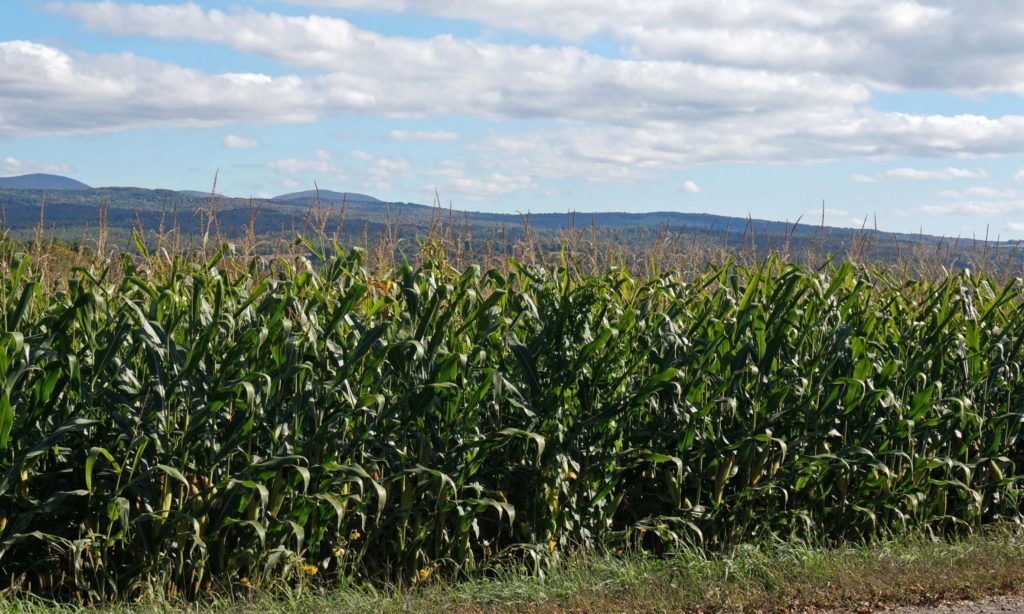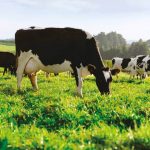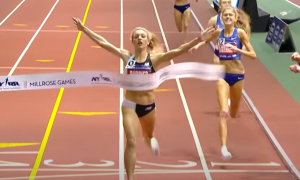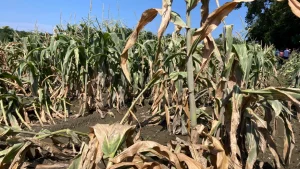
After working on the update for years, regulators at the Agency of Agriculture, Food and Markets have prepared a set of draft rules. But a coalition of environmental advocates say the proposed regulations don’t go far enough to protect Vermont’s environment in light of climate change.
Lawmakers are expected to vote on the new rules this Thursday, Jan. 5.
Vermont Public’s Jenn Jarecki spoke with climate and environment reporter Abagael Giles about the draft regulations. Their conversation below has been edited and condensed for clarity.
Jenn Jarecki: So to get started, how are pesticides regulated in Vermont and what do the rules look like right now?
Abagael Giles: Yeah, so Vermont law defines pesticides as “economic poisons,” which I think is a good place to start.
These are toxic chemicals that our government — and a lot of people in farming — see as necessary for industry.
These rules govern everything from chemicals like atrazine and glyphosate, used in corn fields, to insecticides used on lawns and golf courses, as well as the herbicides and insecticides used for invasive species control (and there is overlap there).
Basically, pesticide sellers have to register their products with the state before they can sell them here. The state sorts them into categories based on how toxic they are. Federal, but also state law, decides a lot of that.
The most toxic pesticides can only be applied by someone with a special certification. And people who apply them have to report to the state how much they use, where they apply them and when.
Mostly these rules deal with all the red tape. Not what pesticides fall into what pot, but how Vermont treats them once they’re there. Who gets to apply them, use them, sell them and what kind of permit, if any, you need to do that. But also who you have to tell when you use them.
So what are the key changes on the table here?
Big picture, these updates are happening to bring Vermont’s regulations up to date with the EPA’s; the federal agency made changes to its rules a few years ago. Vermont has to have regulations that are at least as strict as the federal government’s regulations — though Vermont can also choose to regulate pesticides more aggressively.
Big changes include a requirement that people who apply commercial pesticides notify all landowners about pesticide use on their property.
It also creates a process for towns and nonprofits to apply for a permit to spray for invasive species — think Japanese knotweed — on land that doesn’t belong to them, or in public right of ways. There is a new permit for spraying for adult mosquitos.
And there are also some stricter rules about how companies that use pesticides store them. And a rule that landlords and homeowner associations notify condo residents when they use pesticides there.
What do we know right now about how pesticides are used in Vermont? And is that changing?
Yeah, so this is complicated. Because of the way the current regulations work, some of the pesticides applied on farms — cornfields are a big place where this happens — don’t get reported in the state’s data. That’s because only the chemicals regulators have agreed are the most hazardous have to be reported by private applicators.
For example, atrazine, which is a commonly used weed killer, is in this category. But glyphosate, the big ingredient in Roundup, is also used a lot by Vermont farms. You only have to report that one to the state’s database if you’re a commercial applicator — someone who gets paid to apply it.
But Vermont farmers are contending with new and more prolific pests every year. It’s a problem that’s made worse by climate change. As we see fewer prolonged freeze periods and our winters warm, it makes it easier for pests that couldn’t survive here in the past to get a foothold.
Environmental advocates are worried that climate change will lead to farms using more pesticides unless we create new regulations that push for alternative solutions.
Also, bees are in decline here and globally. A lot of science has shown that pesticides are part of the problem.
What are the biggest objections from the environmental community? What are they asking for?
Yeah, so several environmental groups including Conservation Law Foundation, the Lake Champlain Committee and Rural Vermont signed a letter to lawmakers and the Agency of Agriculture calling for the lawmakers to reject this new set of rules for a couple big reasons.
They say the state should require that people who get a permit to apply the most toxic pesticides also present a plan for how they’ll use less over time and do environmental monitoring.
They feel like the state didn’t present enough scientific evidence to support its decision not to require this as part of every permit it issues to people using regulated pesticides, not just some.
And the environmental groups say without this, the agency’s claims that these new regulations will be a boon for the environment and for climate change just don’t pencil out.
State regulators point out that the current pesticide rules don’t require this sort of tracking or plan as part of any permit. So they see what’s proposed as a big step forward. And they say doing what advocates call for would be tricky from a regulatory standpoint.
Advocates also wanted this bill to include explicit protections for native pollinators.
The current 1991 regulations primarily protect honeybees — and the proposed new regulations would expand protections for honeybees, but not for native bees.
Advocates also want to see more public involvement in decisions about pesticide regulations.
So yeah, the advocates are calling on lawmakers to reject this new rule and for the Agency of Agriculture to delay the process until lawmakers can be more explicit about what they’re looking for in an update. They say the rule as written doesn’t go far enough beyond what’s federally required.
Now, pesticides have come up in the Statehouse a lot in the last few years, especially around the decline of bees and concerns about water quality. Are there any places where this rule deals with policy that lawmakers are still figuring out?
Yeah, there’s growing evidence that PFAS can be spread when people apply pesticides.
These are a class of toxic chemicals that never break down in the natural environment. They’ve been linked to cancer. And this past summer, the EPA proposed designating them as hazardous substances under its superfund program, which is a big deal.
The agency has said that even tiny amounts of these so-called forever chemicals are super toxic for humans. But to the frustration of regulators in a lot of states, the EPA is still working on a plan for what to do about them.
PFAS are often used for waterproofing, and they tend to show up in the containers pesticides are stored in.
This proposed set of regulations doesn’t mention PFAS. Some advocates found that disappointing and say it should be a priority for lawmakers in the coming sessions.
Also last year, lawmakers debated a ban on seeds coated with neonicotinoid pesticides.
This insecticide is a neurologic toxin that is bad for bees. Right now, it’s used by most farmers preventatively to protect seeds and seedlings.
The ban was softened last year after testimony from farmers who said even when they try, it’s hard to find seeds in Vermont that aren’t treated. Lawmakers asked the Agency of Agriculture to adopt best management practices for using neonicotinoid treated seeds instead, and those are still in the works.
Beekeepers in the state have been pushing for stricter regulations for some time. A committee of experts told lawmakers a few years ago that Vermont should be tracking all pesticide use, not just the most dangerous ones. And we should be setting clear targets for reducing our dependence on them.
These are things legislators could revisit and something environmental advocates really wanted these regulations to address.
What’s the next step in the process and how can Vermonters still weigh in?
So again, these regulations were written by regulators at the Agency of Agriculture. Next, a small group of lawmakers from both the House and Senate will get to vote on whether the rules are consistent with Vermont law.
That vote happens Thursday in Montpelier, before the Legislative Committee on Administrative Rules.
Now the committee has already had quite a bit of back and forth with the Agency of Agriculture over this rule. So if they vote not to approve it, Vermont law technically allows the agency to adopt the regulations anyway. But the agency says they’d rather not have to.
Still, lawmakers can refer the issue to the committees in both chambers who deal with environmental regulations and agriculture and tell them they want to see some bills that call for updates. What they tell those committees could have a big impact on future policy.
People who want to weigh in can reach out to the lawmakers that sit on the Legislative Committee on Administrative Rules, or to their local representatives.

























